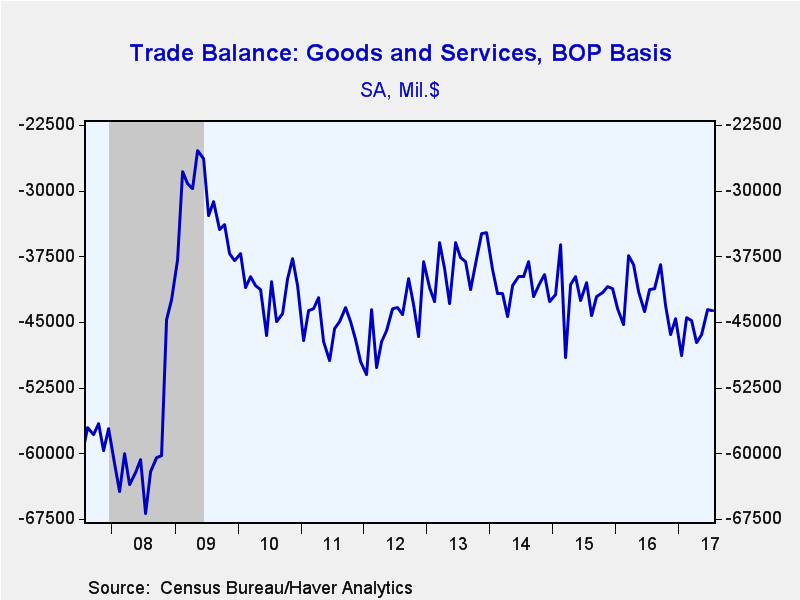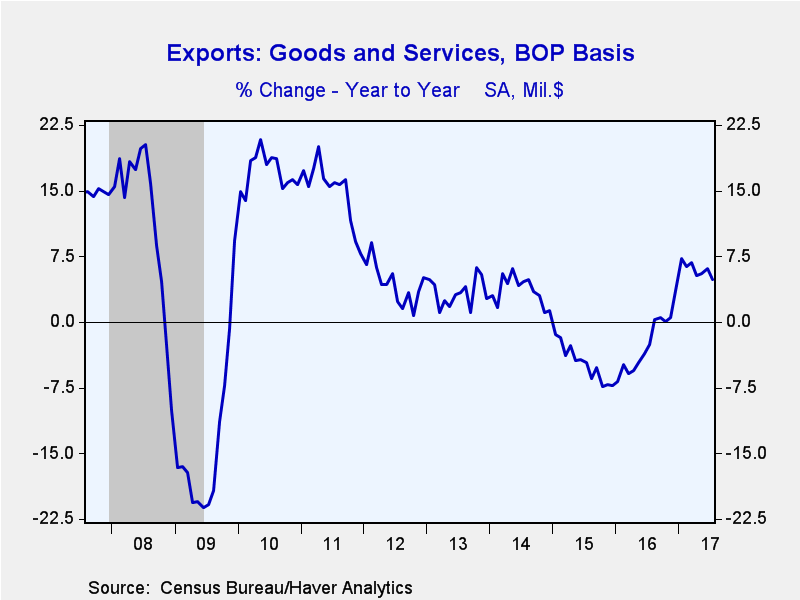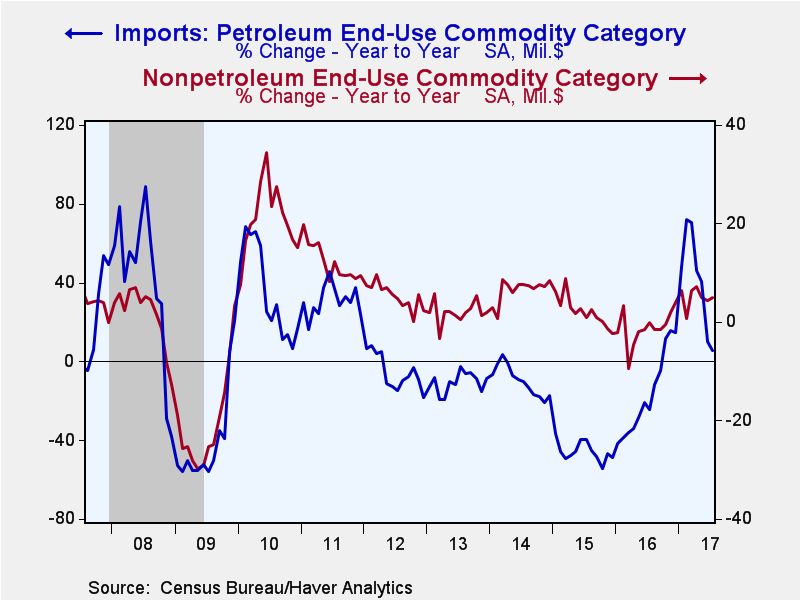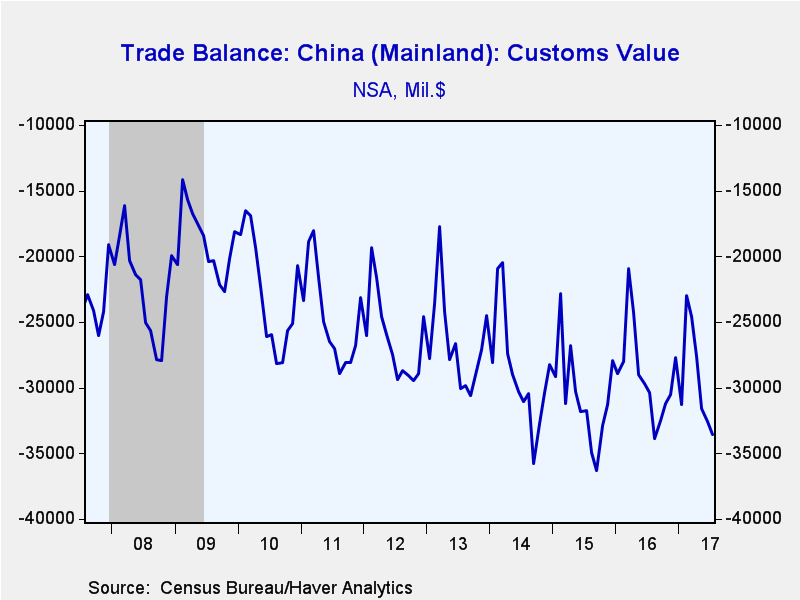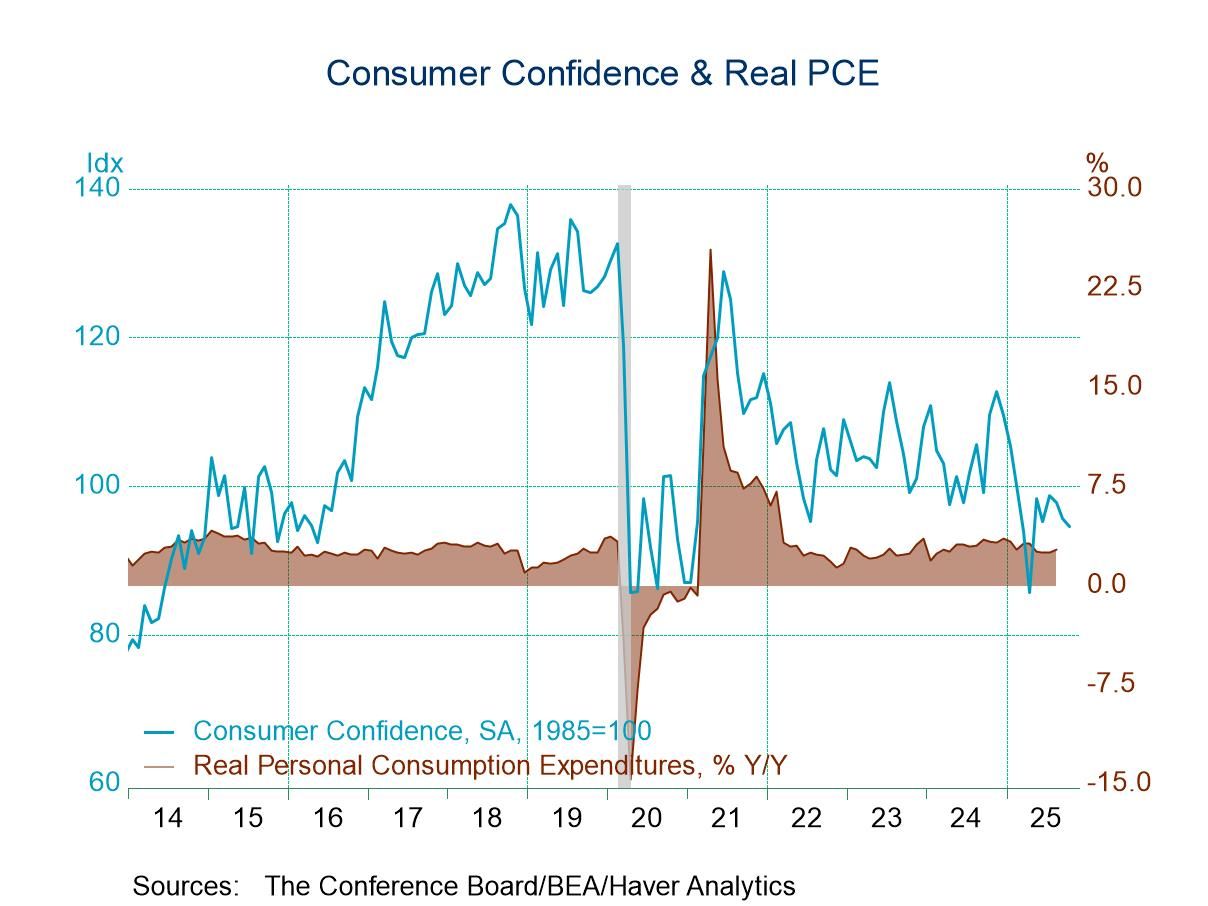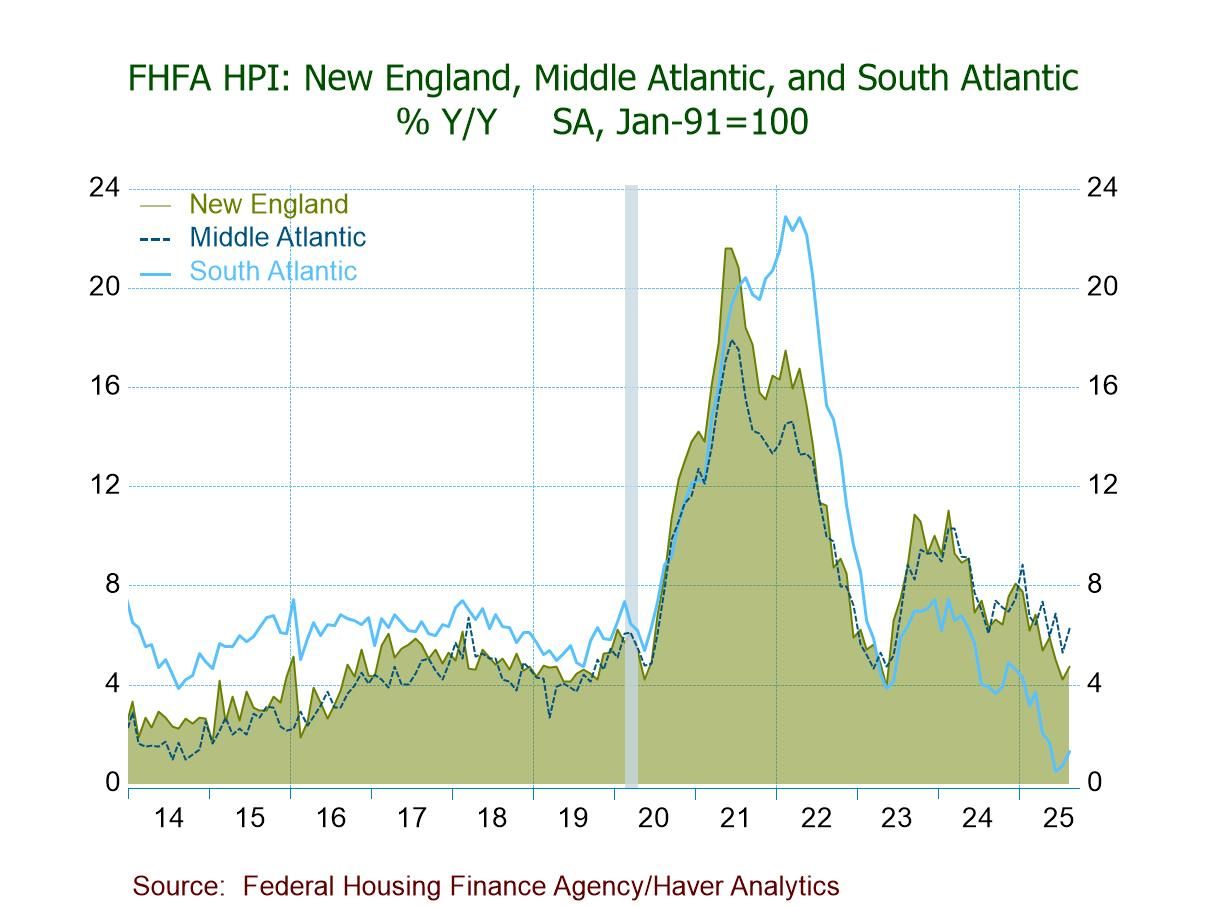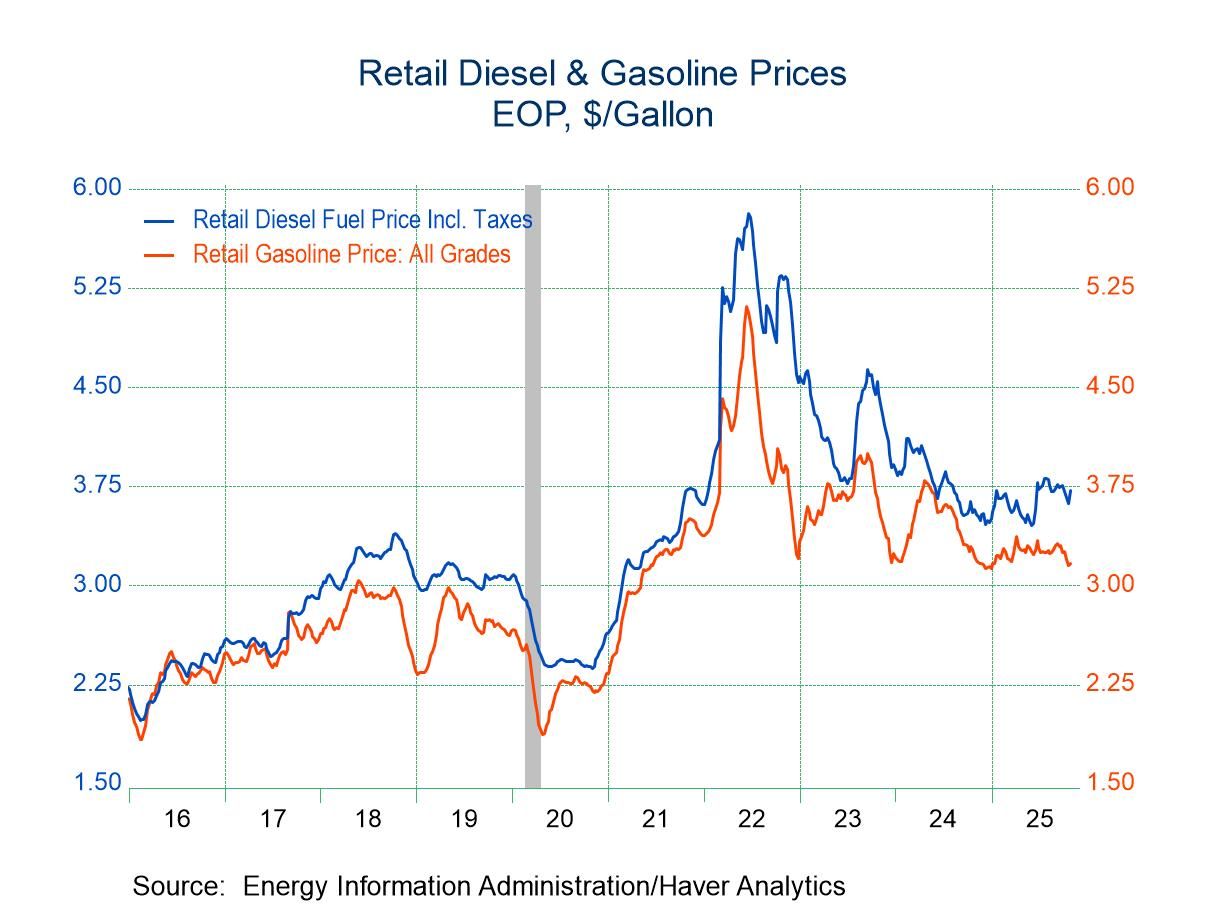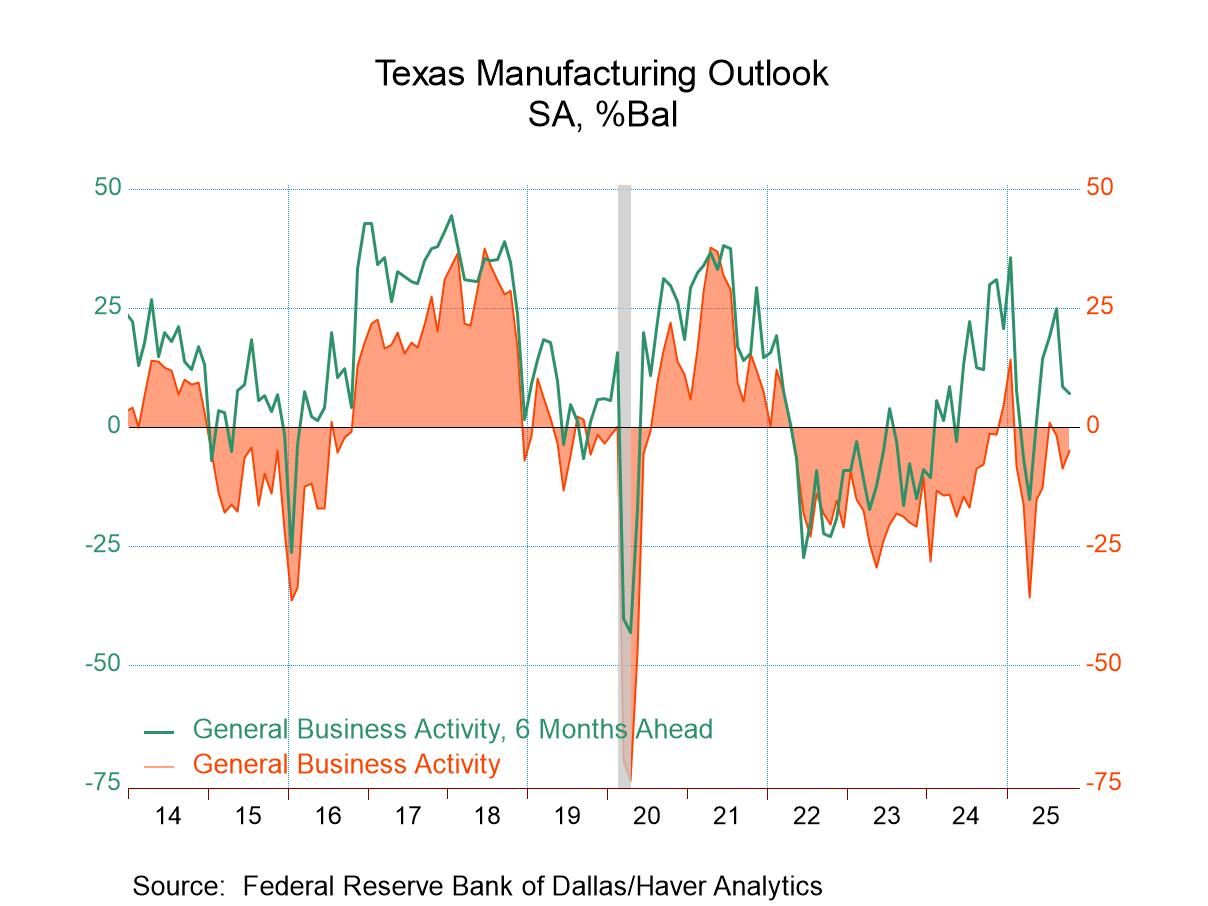 Global| Sep 06 2017
Global| Sep 06 2017U.S. Trade Deficit Edges Up
by:Tom Moeller
|in:Economy in Brief
Summary
The U.S. trade deficit in goods and services of $43.7 billion during July changed little from $43.5 billion during June, revised from $43.6 billion. A $44.6 billion deficit had been expected in the Action Economics Forecast Survey. [...]
The U.S. trade deficit in goods and services of $43.7 billion during July changed little from $43.5 billion during June, revised from $43.6 billion. A $44.6 billion deficit had been expected in the Action Economics Forecast Survey. Total exports eased 0.3% (+4.9% y/y) after a 1.4% June rise. Imports fell 0.2% (+5.1% y/y) after 0.1% slip.
The decline in exports reflected a 0.3% drop (+5.5% y/y) in exports of goods. Auto exports declined 4.4% (+3.5% y/y) after a 2.9% rise. Nonauto consumer goods exports were off 4.1% (-3.1% y/y) after declining 1.9%. Exports of industrial supplies & materials eased 0.3% (+14.8% y/y) following a 0.6% increase. To the upside were foods, feeds & beverage exports which gained 3.0% (-2.9% y/y) following a 5.9% jump. Capital goods exports gained 2.1% (3.4% y/y) after rising 1.9%.
Services exports declined 0.2% (+4.2% y/y) following a 1.0% increase. Charges for the use of intellectual property fell 0.4% (-5.3% y/y) after a 0.2% decline. Travel exports fell 1.5% (+3.9% y/y) after three straight months of strong gains. Transport exports rose 0.7% (4.3% y/y) following a 1.7% increase.
Imports' decline was driven by a 0.2% drop (+5.4% y/y) in goods imports, the third straight month of slight decline. Industrial supplies & materials imports fell 1.7% (+5.2% y/y), the fourth decline in five months. Auto exports also were off 2.7% (+2.8% y/y), the third decline in four months. Nonauto consumer goods imports held steady (0.7% y/y) after two months of sharp decline. To the upside were capital goods imports which rose 2.4% (10.5% y/y) following a 0.1% uptick. Foods, feeds & beverage imports increased 1.7% (9.8% y/y) following a 0.6% rise.
Nonpetroleum goods imports rose 0.3% (5.1% y/y) after a 0.7% rise. Petroleum imports declined 6.6% (+5.6% y/y) after a 9.6% drop. The quantity of energy-related petroleum product fell 4.0% (+0.5% y/y), the third sharp decline in four months. The value of petroleum product imports eased 6.2% (+6.5% y/y) after a 7.4% drop. The cost of crude petroleum fell to $43.20 per barrel, down from $44.68 in June, but up from $41.02 in July of last year.
Services imports ticked 0.1% higher (5.9% y/y) for the second straight month. Charges for the use of intellectual property rose 1.2% (14.1% y/y) following a 1.0% rise. Travel imports declined 1.1% (+7.3% y/y) after a 0.2% dip. Transport imports rose 0.6% (5.8% y/y) following a 0.7% decline.
By country, the trade deficit with China increased to $33.6 billion from $30.3 billion one year earlier. Exports strengthened 10.1% y/y while imports increased 10.5% y/y). The trade deficit with Japan eased to $5.8 billion from $6.0 billion twelve months earlier. Exports to Japan increased 10.8% y/y while imports gained 2.3% y/y. The trade deficit with the European Union increased to $13.5 billion from $12.4 billion one year earlier. Exports to the EU eased 0.2% y/y while imports increased 3.0% y/y. These country data are not seasonally adjusted.
The international trade data can be found in Haver's USECON database. Detailed figures are available in the USINT database. The expectations figures are from the Action Economics Forecast Survey, which is carried in AS1REPNA.
Has China's Growth Reached a Turning Point? from the Federal Reserve Bank of Kansas City is available here.
| Foreign Trade in Goods & Services (Current Dollars) | Jul | Jun | May | Y/Y | 2016 | 2015 | 2014 |
|---|---|---|---|---|---|---|---|
| U.S. Trade Deficit | $43.7 bil. | $43.5 bil. | $46.4 bil. | $41.3 bil. (7/16) |
$504.8 bil. | $500.4 bil. | $490.3 bil. |
| Exports of Goods & Services (% Chg) | -0.3 | 1.4 | 0.4 | 4.9 | -2.5 | -4.7 | 3.6 |
| Imports of Goods & Services (% Chg) | -0.2 | -0.1 | -0.1 | 5.1 | -1.9 | -3.6 | 4.0 |
| Petroleum (% Chg) | -6.6 | -9.6 | 2.2 | 5.6 | -19.4 | -45.5 | -9.7 |
| Nonpetroleum Goods (% Chg) | 0.3 | 0.7 | -0.6 | 5.1 | -1.2 | 2.2 | 6.5 |
Tom Moeller
AuthorMore in Author Profile »Prior to joining Haver Analytics in 2000, Mr. Moeller worked as the Economist at Chancellor Capital Management from 1985 to 1999. There, he developed comprehensive economic forecasts and interpreted economic data for equity and fixed income portfolio managers. Also at Chancellor, Mr. Moeller worked as an equity analyst and was responsible for researching and rating companies in the economically sensitive automobile and housing industries for investment in Chancellor’s equity portfolio. Prior to joining Chancellor, Mr. Moeller was an Economist at Citibank from 1979 to 1984. He also analyzed pricing behavior in the metals industry for the Council on Wage and Price Stability in Washington, D.C. In 1999, Mr. Moeller received the award for most accurate forecast from the Forecasters' Club of New York. From 1990 to 1992 he was President of the New York Association for Business Economists. Mr. Moeller earned an M.B.A. in Finance from Fordham University, where he graduated in 1987. He holds a Bachelor of Arts in Economics from George Washington University.


